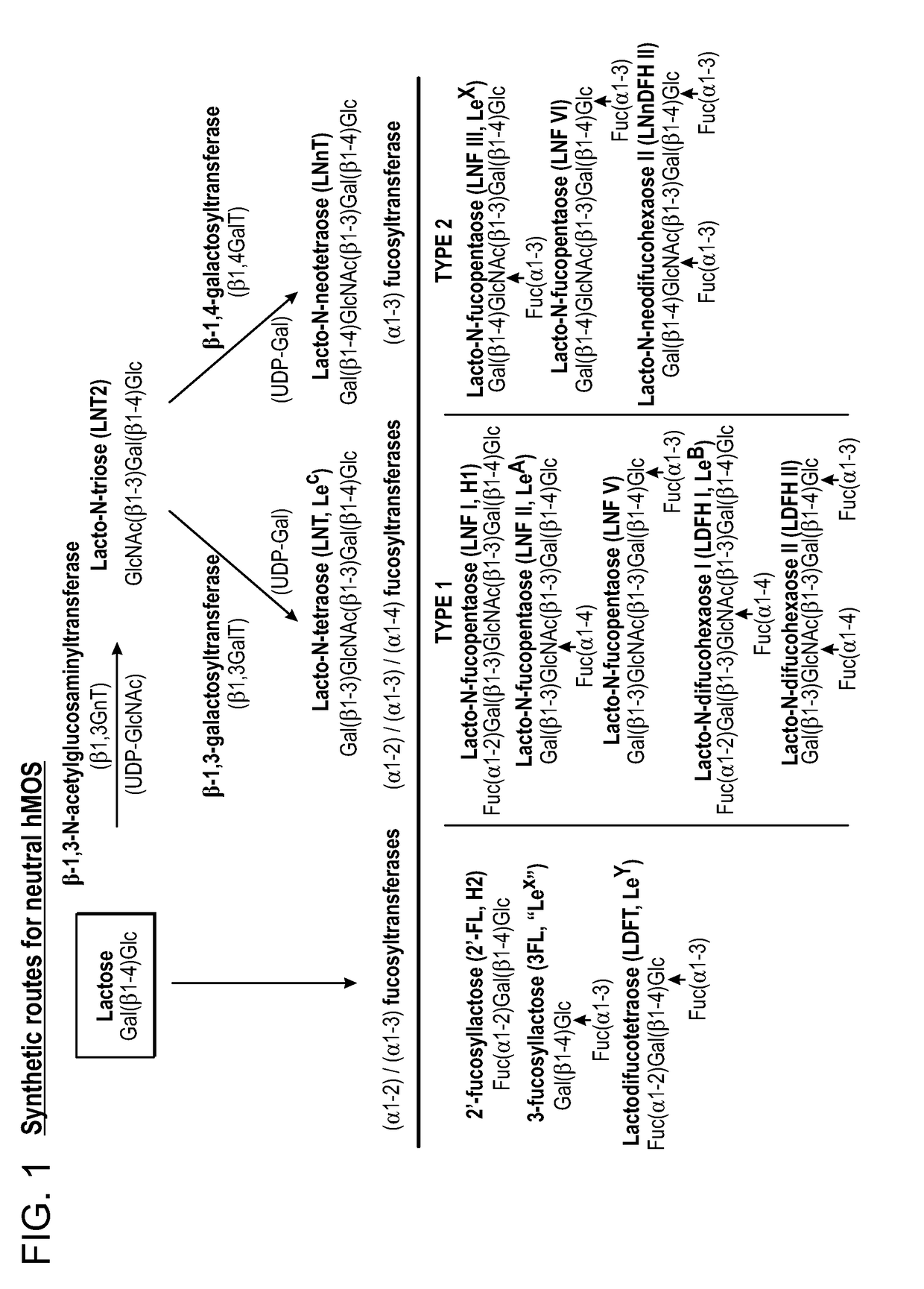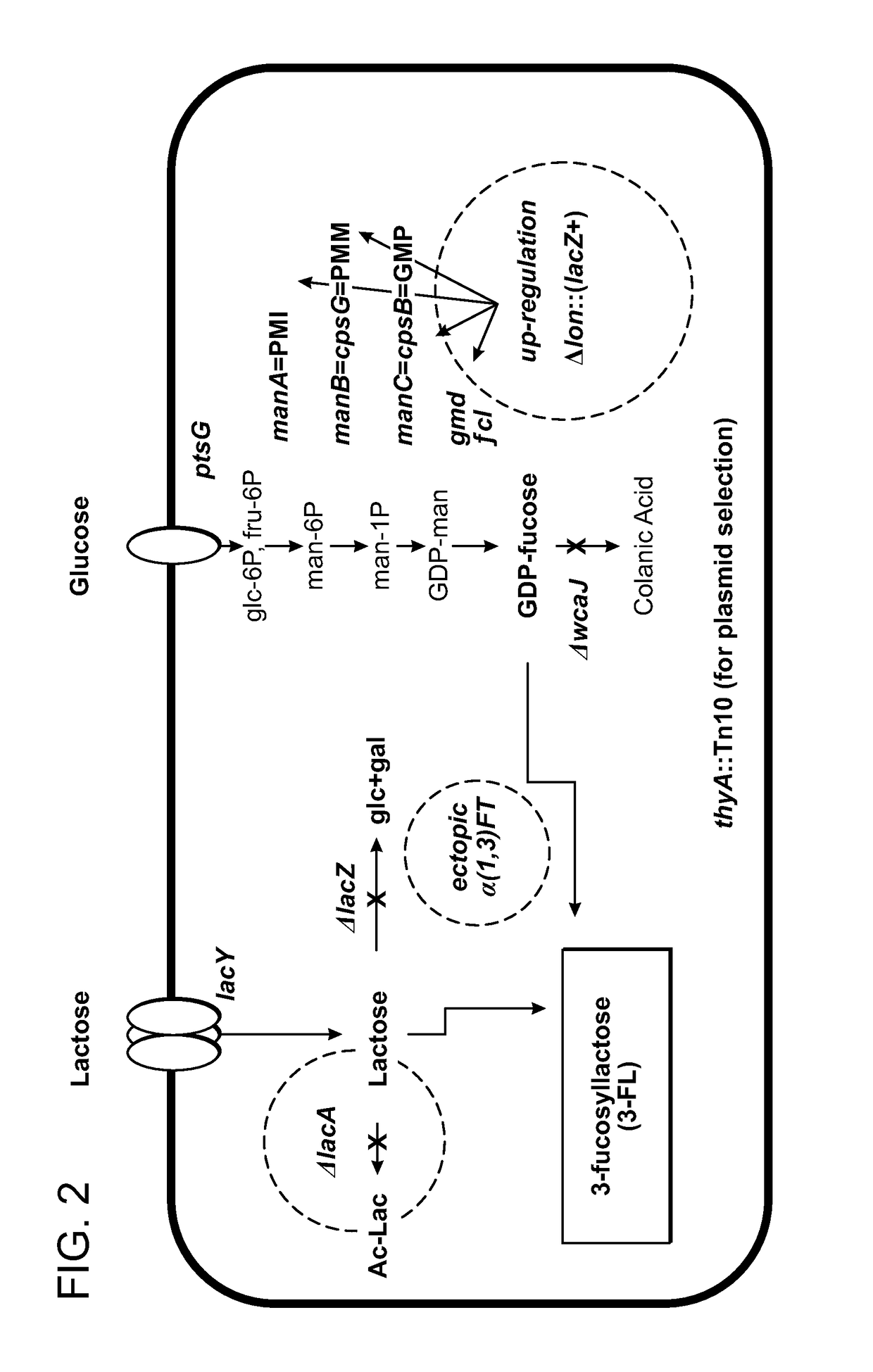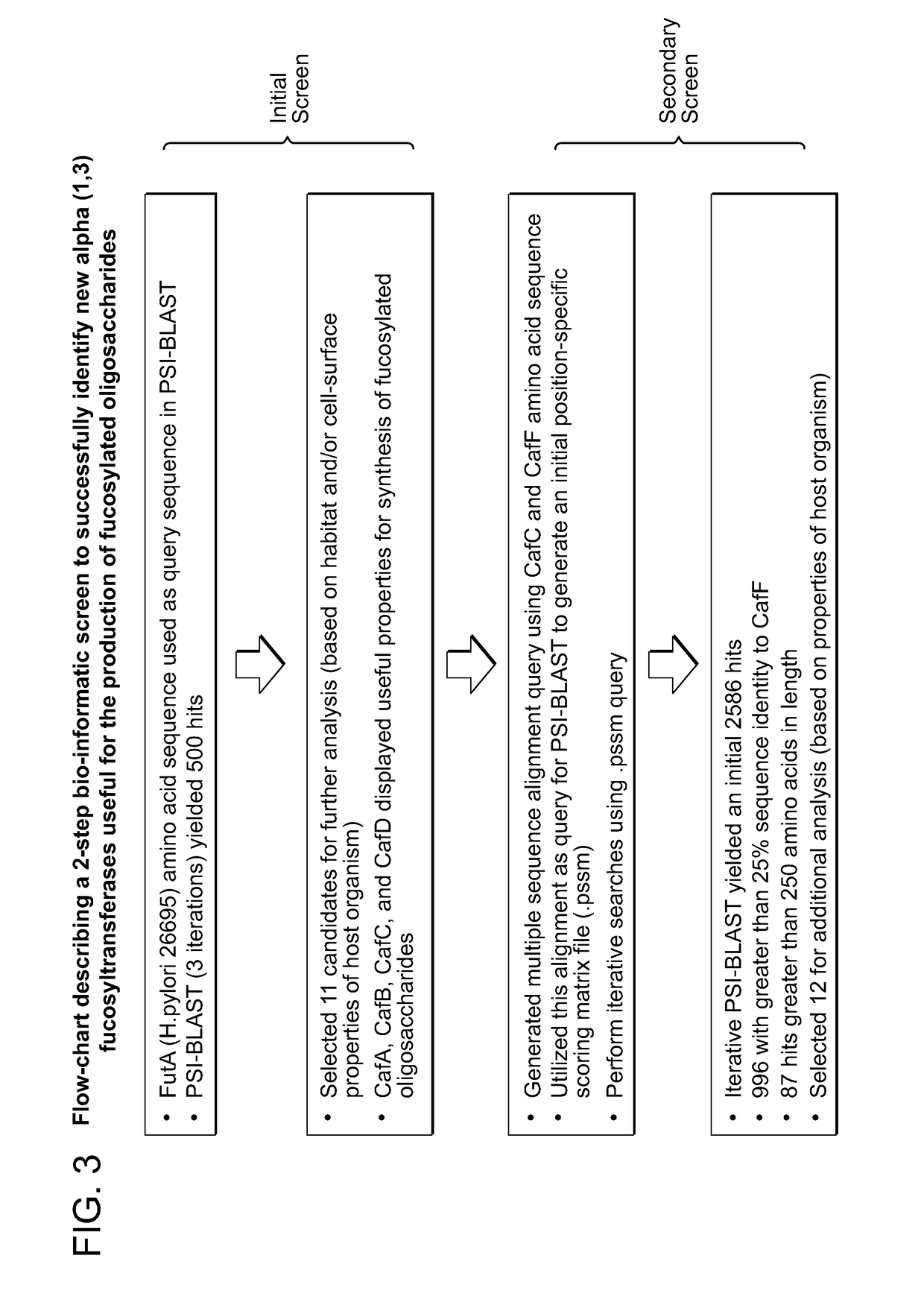Alpha (1,3) Fucosyltransferases For Use In The Production of Fucosylated Oligosaccharides
a technology of fucosyltransferases and oligosaccharides, applied in the direction of transferases, oligosaccharides, drug compositions, etc., can solve the problems of high overall cost, limited production through chemical synthesis, and high cost of reactants, and achieve the effects of increasing the intracellular concentration of lactos
- Summary
- Abstract
- Description
- Claims
- Application Information
AI Technical Summary
Benefits of technology
Problems solved by technology
Method used
Image
Examples
example 2
of LDFT
[0161]CafA, C and F were tested for utilization in combination with an α(1,2) fucosyltransferase produced in the same strain to catalyze the synthesis of Lactodifucotetraose (LDFT) (FIG. 7). The genes encoding CafA, C and F were inserted into plasmid pG297 (harboring wbgL encoding an α(1,2) fucosyltransferase from E. coli 0126) using standard molecular biology techniques. Thus, a series of “mini-operons” consisting of wbgL in combination with cafA, cafC or cafF under control of the PL promoter were constructed. The resulting plasmids were then transformed into an engineered E. coli production strain.
[0162]The E. coli strains harboring the different LDFT expression plasmids were analyzed in small-scale experiments. Strains were grown in selective media (lacking thymidine) to early exponential phase. Lactose was then added to a final concentration of 1%, and tryptophan (200 μM) was added to induce expression of the α(1,2) and α(1,3) FTs from the PL promoter. At the end of the i...
example 3
n of LNF III
[0163]The majority of the α(1,3) FT candidates tested from the first database screen (CafD, E, G, H, I, J, K) were unable to utilize lactose as a donor substrate and could not promote the synthesis of 3FL, despite the fact that most of these enzymes were well-expressed in E. coli (Table 1). One explanation for this observation is that some bacterial and higher eukaryotic α(1,3) FTs prefer N-acetylglucosamine (GlcNAc) rather than glucose (Glc) as an acceptor for the attachment of fucose (Breton, C., et al. (1998). Conserved structural features in eukaryotic and prokaryotic fucosyltransferases. Glycobiology 8, 87-94.; Ma, B., et al. (2003). C-terminal amino acids of Helicobacter pylori alpha 1,3 / 4 fucosyltransferases determine type I and type II transfer. J Biol Chem 278, 21893-1900.; Ma, B., et al. (2006). Fucosylation in prokaryotes and eukaryotes. Glycobiology 16, 158R-184R.). Therefore, studies were carried out to determine whether CafD, E, G, H, I, J or K catalyze the...
example 4
cosyltransferases in Tandem or in a String Configuration
[0166]Bacterial strains were constructed that harbor an expression plasmid containing two different α(1,3) fucosyltransferases in a “tandem” arrangement or in a string (three or more genes) configuration under control of the PL promoter. FIG. 21 provides a map of such a plasmid, pG420 (nucleic acid sequence SEQ ID NO: 64), that carries genes encoding two different α(1,3) fucosyltransferases; CafC (amino acid sequence SEQ ID NO: 2) and CafN (amino acid sequence SEQ ID NO: 44), arranged in an operon driven from the PL promoter.
[0167]FIG. 22A-B demonstrates enhanced fermentor production of 3-fucosyllactose using an expression plasmid expressing dual α(1,3) fucosyltransferases. Specifically, FIG. 22A shows thin layer chromatography analysis of culture supernatants from fermentation run 126. In this experiment, an engineered E. coli production strain harboring plasmid pG366 (pEC2-PL-cafC-rcsA-thyA) was grown under fed-batch conditio...
PUM
| Property | Measurement | Unit |
|---|---|---|
| percentage sequence identity threshold | aaaaa | aaaaa |
| % sequence identity threshold | aaaaa | aaaaa |
| % sequence identity threshold | aaaaa | aaaaa |
Abstract
Description
Claims
Application Information
 Login to View More
Login to View More - R&D
- Intellectual Property
- Life Sciences
- Materials
- Tech Scout
- Unparalleled Data Quality
- Higher Quality Content
- 60% Fewer Hallucinations
Browse by: Latest US Patents, China's latest patents, Technical Efficacy Thesaurus, Application Domain, Technology Topic, Popular Technical Reports.
© 2025 PatSnap. All rights reserved.Legal|Privacy policy|Modern Slavery Act Transparency Statement|Sitemap|About US| Contact US: help@patsnap.com



